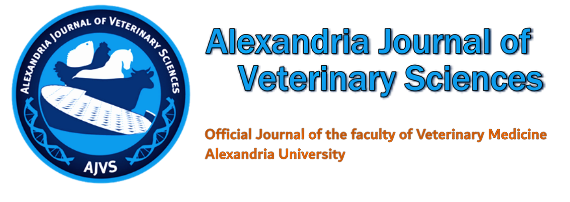
| Original Article Online Published: 05 Sep 2021 | ||||||||||||
AJVS. 2021; 70(2): 63-75 doi: 10.5455/ajvs.115295 Effect of different dietary inclusion levels of mulberry leaves on productive traits, economic indices, and immunity of white and brown Japanese quail Seham F. Shehata, Eman A. Sallam, Aya E. Azam, Mohamed M. Soliman, Liza S. Mohammed.
| ||||||||||||
| How to Cite this Article |
| Pubmed Style Shehata SF, Sallam EA, Azam AE, Soliman MM, Mohammed LS. Effect of different dietary inclusion levels of mulberry leaves on productive traits, economic indices, and immunity of white and brown Japanese quail. AJVS. 2021; 70(2): 63-75. doi:10.5455/ajvs.115295 Web Style Shehata SF, Sallam EA, Azam AE, Soliman MM, Mohammed LS. Effect of different dietary inclusion levels of mulberry leaves on productive traits, economic indices, and immunity of white and brown Japanese quail. https://www.alexjvs.com/?mno=115295 [Access: May 03, 2025]. doi:10.5455/ajvs.115295 AMA (American Medical Association) Style Shehata SF, Sallam EA, Azam AE, Soliman MM, Mohammed LS. Effect of different dietary inclusion levels of mulberry leaves on productive traits, economic indices, and immunity of white and brown Japanese quail. AJVS. 2021; 70(2): 63-75. doi:10.5455/ajvs.115295 Vancouver/ICMJE Style Shehata SF, Sallam EA, Azam AE, Soliman MM, Mohammed LS. Effect of different dietary inclusion levels of mulberry leaves on productive traits, economic indices, and immunity of white and brown Japanese quail. AJVS. (2021), [cited May 03, 2025]; 70(2): 63-75. doi:10.5455/ajvs.115295 Harvard Style Shehata, S. F., Sallam, . E. A., Azam, . A. E., Soliman, . M. M. & Mohammed, . L. S. (2021) Effect of different dietary inclusion levels of mulberry leaves on productive traits, economic indices, and immunity of white and brown Japanese quail. AJVS, 70 (2), 63-75. doi:10.5455/ajvs.115295 Turabian Style Shehata, Seham F., Eman A. Sallam, Aya E. Azam, Mohamed M. Soliman, and Liza S. Mohammed. 2021. Effect of different dietary inclusion levels of mulberry leaves on productive traits, economic indices, and immunity of white and brown Japanese quail. Alexandria Journal of Veterinary Sciences, 70 (2), 63-75. doi:10.5455/ajvs.115295 Chicago Style Shehata, Seham F., Eman A. Sallam, Aya E. Azam, Mohamed M. Soliman, and Liza S. Mohammed. "Effect of different dietary inclusion levels of mulberry leaves on productive traits, economic indices, and immunity of white and brown Japanese quail." Alexandria Journal of Veterinary Sciences 70 (2021), 63-75. doi:10.5455/ajvs.115295 MLA (The Modern Language Association) Style Shehata, Seham F., Eman A. Sallam, Aya E. Azam, Mohamed M. Soliman, and Liza S. Mohammed. "Effect of different dietary inclusion levels of mulberry leaves on productive traits, economic indices, and immunity of white and brown Japanese quail." Alexandria Journal of Veterinary Sciences 70.2 (2021), 63-75. Print. doi:10.5455/ajvs.115295 APA (American Psychological Association) Style Shehata, S. F., Sallam, . E. A., Azam, . A. E., Soliman, . M. M. & Mohammed, . L. S. (2021) Effect of different dietary inclusion levels of mulberry leaves on productive traits, economic indices, and immunity of white and brown Japanese quail. Alexandria Journal of Veterinary Sciences, 70 (2), 63-75. doi:10.5455/ajvs.115295 |








